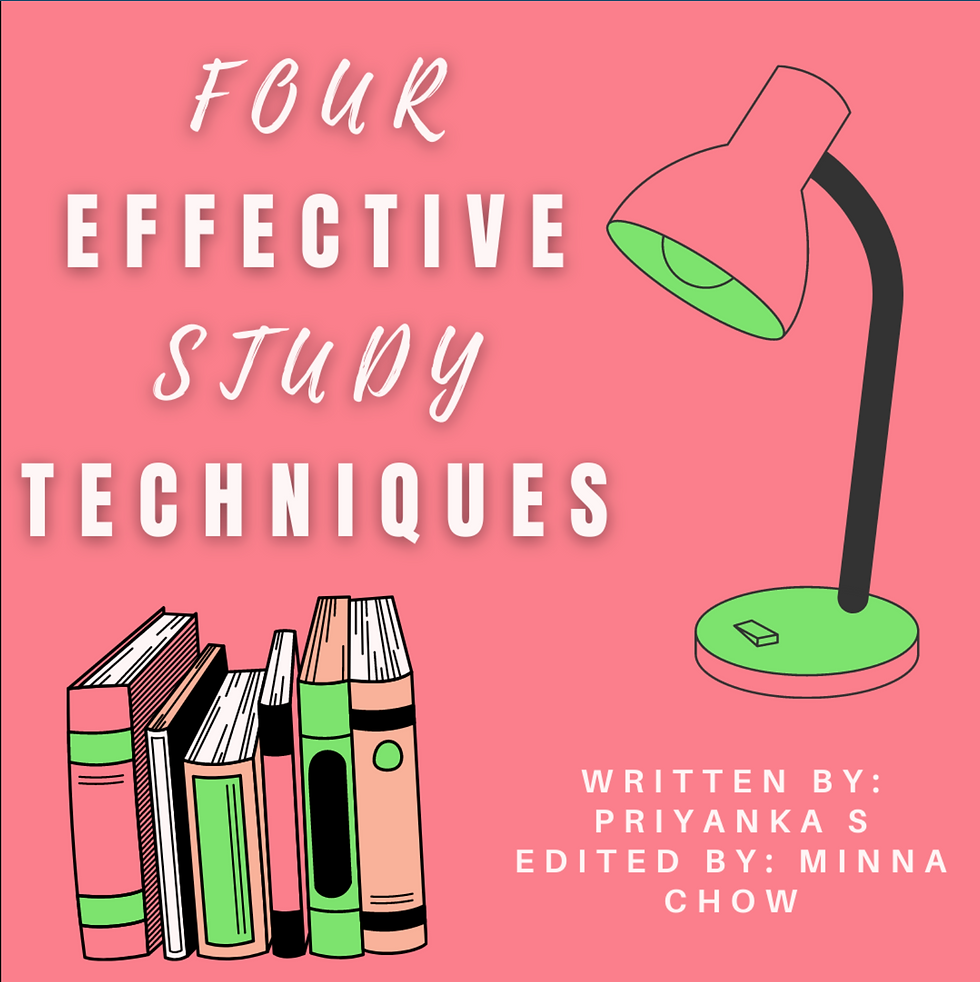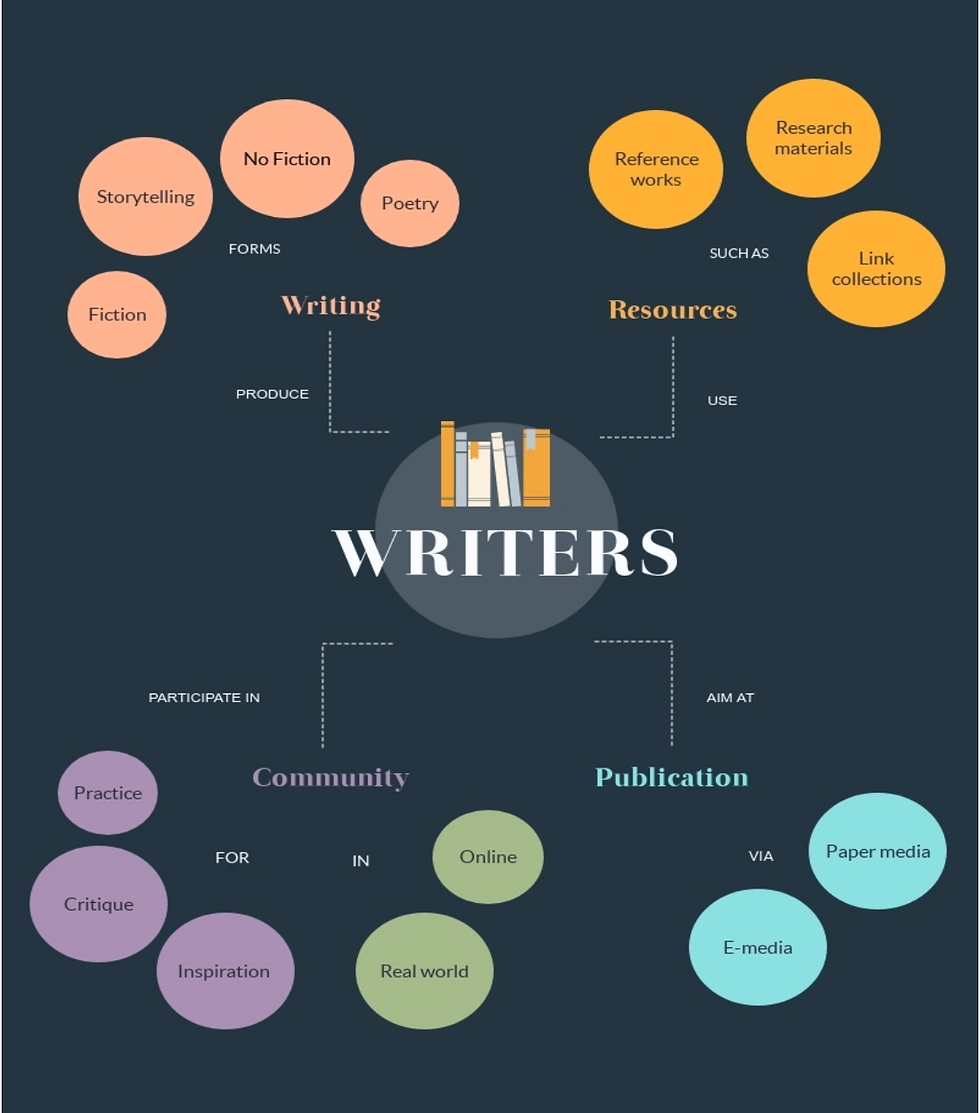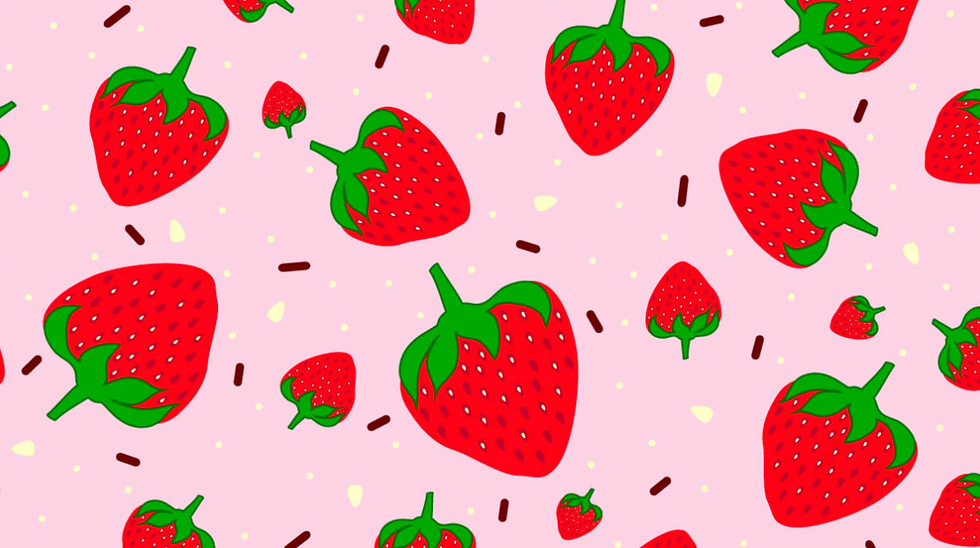The 4 Most Effective Study Techniques
- Strawberry Opportunities

- Nov 26, 2020
- 4 min read

Welcome to DAY 4 of the Thanksgiving Blog Series.

Written by Priyanka S.
Edited by Minna Chow
Designed by Parniyan Haidari
Let’s face it. Everyone wants good grades, but no one wants to spend too much time studying. Staying up all night and cramming every word into your head is not always the best way. Here are some proven methods which will help you maximize your study time with minimum effort.
1.The Leitner System
Named after the German science journalist Sebastian Leitner, this system uses flashcards and a number of boxes. You can use cereal boxes or kitchen containers if you don’t have cardholder boxes.
Flashcards: Anything that can be answered in the Q&A format (like words and their translations, countries and their capitals, etc.) can be made into a flashcard with one side posing the question and the other side having the answer. You can use paper, cardboard, or index cards to make them. Try to use different colored cards for different topics or subjects. Keep the answers as short and concise as possible.
.
How: Number the boxes from 1. Every card starts out in box 1, and as you revise, you can move the correctly answered cards to box 2; the incorrect ones stay in the same box. Next, review the cards in box 2 and move the correct ones to box 3, and so on until they reach the final box. If you get a card in any of the boxes wrong, you move it down a box. (Or you can move it all the way down to box 1 if you want to be extreme.) After you go through all the cards, you can review the boxes with a frequency of your choice.
Here’s an example:
Box 1 - Everyday
Box 2 - Every 2 days
Box 3 - Every 4 days
Box 4 - Once a week
Why: This system efficiently combines two useful techniques: active recall and spaced repetition. The cards in the lower boxes (the ones you don’t know very well) will get reviewed the most, forcing you to focus on your weaker subjects. You also get to revise the higher boxes, keeping them fresh in your memory.
2. Pretending you’re a teacher
Yes, that’s right! When you take on the role of a teacher, you’re more likely to remember the information you’ve learned.
How: Try explaining the concepts that you find difficult to a friend or a group of friends, your parents, or your siblings—even better, your toys and stuffed animals. Sitting on a chair or standing in front of a mirror and pretending that you have an audience of students in front of you also works. If you have trouble explaining it clearly, you can reread and revise the parts you’re having trouble with. Try creating workbooks and questionnaires as if you’re going to test your students and then use them to test yourself.
Why: Research shows that students have better memory and recall when they learn something with the intent of explaining it to others. It’s highly efficient because you’re not only learning for yourself but also taking note of key points and terms, making connections, coming up with suitable examples and analogies to simplify and get across the topic easily to others.
3. The Feynman technique
Named after the famous physicist Richard Feynman, this technique is really simple. It helps you learn even the toughest of topics easily and study efficiently.
How: “If you can’t explain it simply, you don’t understand it well enough.” - This well-known quote is the basis of this method of studying. It makes you explain things simply, using your own words.
Step 1: Choose the topic you want to learn and write it in your notebook.
Step 2: Try to write down an explanation of the concept as if you’re teaching it to someone else. Try sticking to simple language so that someone in a lower grade or with less knowledge of the concept, (or a child, preferably) will be able to understand it. Try to add a few examples or analogies.
Step 3: Review your explanation and find out your areas of weakness, go through your source material or notes, reread them, and repeat step 2.
Step 4: Go through your explanation again and try making it even simpler. If you really want to challenge yourself, then actually try teaching it to a little kid and you’ll know how well you’ve grasped the concept.
Why: Often, when you think you know the concept, you only know the name of the concept. By attempting to come up with an explanation and teach someone with lesser knowledge, you'll be able to see clearly your areas of strength and weaknesses. It allows you to dissect ideas and reconstruct them yourself with your own words.
4. Concept maps
Concept maps are graphic tools that help simplify a concept or make connections between various concepts.
Concept maps are different from Mind maps. Mind maps are linear and explain one topic, whereas concept maps connect various topics.
How: Concept maps display the most relevant information in a topic or the most relevant relationships between topics. They have specific characteristics that set them apart from other diagrams.
Nodes: Nodes are boxes or circles that contain an idea or a sentence. They should be concise - a few words or a short phrase.
Links: Links are connections between two or more ideas or sentences. Linking verbs or phrases can be used to explain node-to-node relationships, like relates to, connects to, precedes, follows or. They can also be simple lines.
Cross-links: Relationships between different concepts are called cross-links. Not all links are cross-links.
Proposition: A proposition is the smallest unit of a concept map. It consists of two nodes and their linking verbs.
Hierarchy: Concept maps can be free-form but hierarchical structure places the most important concepts at the visual center - top, left corner, or the middle of the page.
Focus question: The core aim of the concept map, or the core problem that the map attempts to solve.
Here’s an example:

Why: Concept maps can be simple and short or long and elaborate. Creating your own concept maps helps you increase retention and comprehension because they show you the information visually and help you connect new ideas you’re learning with the ones you already know. It helps you assess what you know and what you don’t know since it’s a representation of your understanding. They’re basically doodles that are super useful.
______________
These are some tips that will help make your process of learning easy, effective, and stress-free. Find out the ones that work for you and adapt them. Remember, the key to studying hard is studying smart. Happy studying!






Comentários